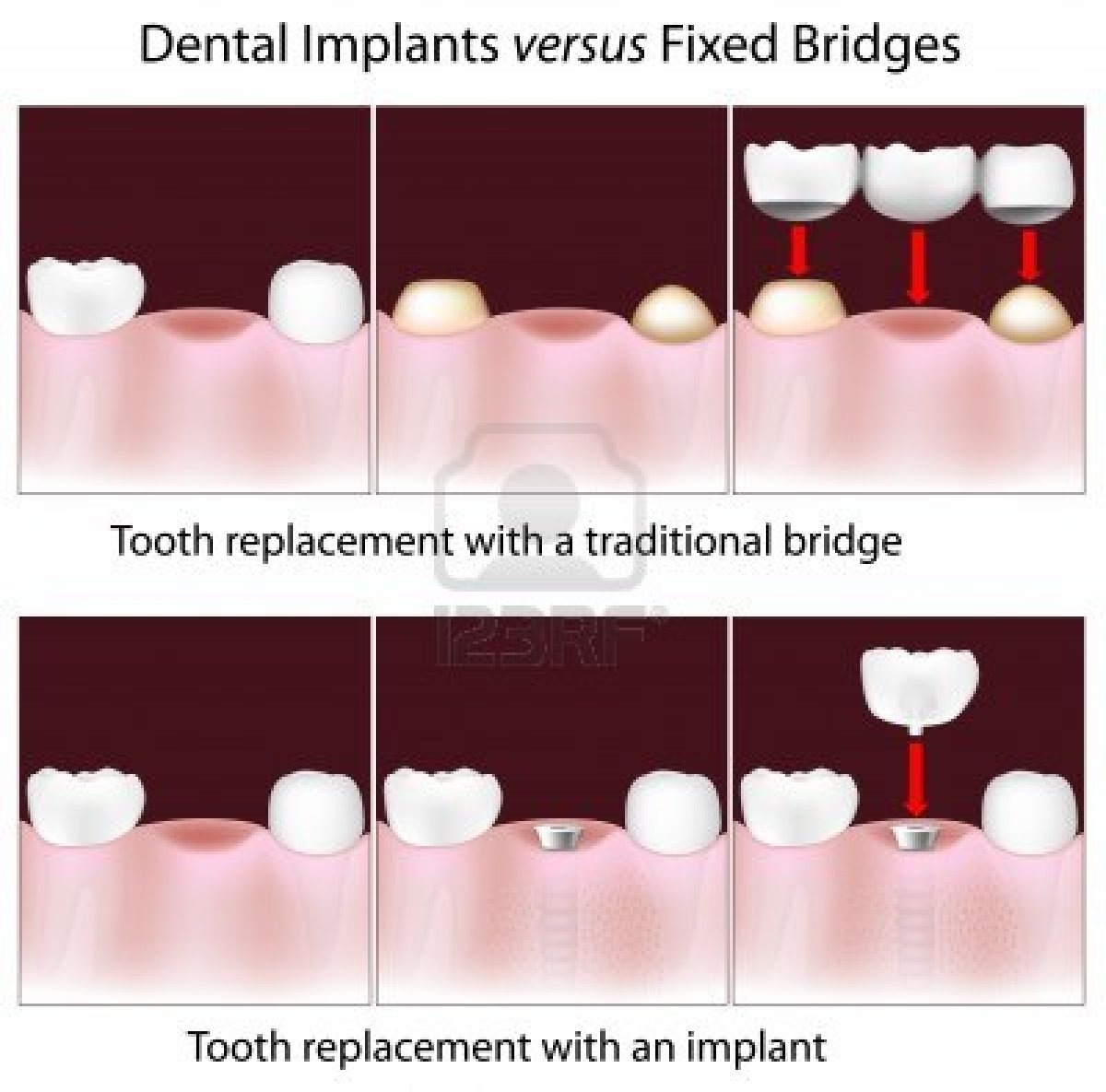 Tooth loss is certainly one of the most damaging dental events that can occur, in respect to both personal appearance as well as oral health. When a tooth is knocked out, falls out, or is extracted by a dentist, the surrounding teeth may start to shift out of their proper position. This can cause a change in the overall bite of the mouth, tooth decay, gum disease, and even additional tooth loss. When the tooth is lost, the dentist will typically recommend that a bridge be placed in the spot of the lost tooth or teeth. A bridge, which can consist of one or several artificial teeth, is anchored to the surrounding teeth on either side using crowns.
Tooth loss is certainly one of the most damaging dental events that can occur, in respect to both personal appearance as well as oral health. When a tooth is knocked out, falls out, or is extracted by a dentist, the surrounding teeth may start to shift out of their proper position. This can cause a change in the overall bite of the mouth, tooth decay, gum disease, and even additional tooth loss. When the tooth is lost, the dentist will typically recommend that a bridge be placed in the spot of the lost tooth or teeth. A bridge, which can consist of one or several artificial teeth, is anchored to the surrounding teeth on either side using crowns.
The process of inserting a dental bridge begins with the preparation of the healthy teeth surrounding the gap. The teeth need to be shaped so that the crowns can be placed atop them. Then, an impression is made of the teeth so that the crown can be properly sculpted. A transitional bridge can then be formed and then fitted for the area. It will be placed in the gap until the permanent bridge is ready. The temporary bridge will usually remain in place for about a week. After the week is up, the dentist will schedule another appointment. At this visit, the dentist will remove the transitional bridge and will place the permanent bridge. He or she will then adjust the piece and cement it into the correct position.
